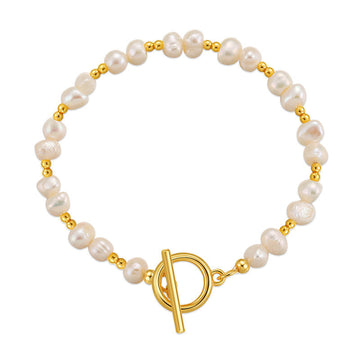Cleaning tips
Soak to soften the dirt
Warm water soaking: Soak the stone bracelet in warm water for a period of time. The water temperature should not be too hot to touch. Generally, soak for 15 to 30 minutes. Warm water can soften the dirt in the crevices, making it easier to clean later. For instance, for some stone bracelets that have been stained with daily dust and sweat, soaking them in warm water will make it easier to remove the dirt.
Add mild detergent: Add a small amount of mild soapy water or neutral detergent to warm water to enhance the cleaning effect. However, it should be noted that the concentration of the cleaning agent should not be too high to avoid residue in the crevices. For instance, when it comes to Hetian jade bracelets, soaking them in diluted soapy water can not only soften the dirt but also prevent damage to the jade.
Utilize physical vibration
Ultrasonic cleaner (use with caution) : If the material of the stone bracelet is relatively hard, such as jade, agate, etc., and there are no inlays or the inlays are firm, an ultrasonic cleaner can be used. Put the bracelet into the cleaning machine, add an appropriate amount of water, turn on the cleaning function, and use the vibration of ultrasonic waves to make the dirt in the crevices fall off. However, some soft or specially structured stone bracelets, such as lapis lazuli and turquoise, are not suitable for ultrasonic cleaning machines to avoid causing damage to them.
Manual shaking: For some stone bracelets that are not suitable for ultrasonic cleaning, you can place the bracelet in a container filled with cleaning liquid and gently shake the container to make the liquid flow in the gaps and remove the dirt. The force of shaking should be moderate to avoid the bracelet colliding with the container wall.
By means of natural adsorption
Coarse salt adsorption: For porous gemstone bracelets such as turquoise and lapis lazuli, place the bracelet in dry coarse salt and use the adsorption effect of coarse salt to remove stains in the crevices. Bury the bracelet in coarse salt and leave it for a period of time. The specific time can be determined according to the severity of the stain, usually ranging from several hours to about a day. Then take out the bracelet and gently brush off the coarse salt and stains on the surface with a soft-bristled brush.
Cleaning tools
Soft-bristled brush
Toothbrush: The bristles of a regular toothbrush are soft and fine, making it suitable for cleaning the crevices of stone bracelets. When in use, dip the toothbrush in an appropriate amount of cleaning liquid and gently scrub the dirt in the crevices. When scrubbing, be careful with the force to avoid the bristles scratching the surface of the bracelet. For example, when cleaning the carvings and crevices of a jade bracelet, a toothbrush can go deep into the crevices to brush out the dirt.
Professional jewelry soft-bristled brush: The bristles of this brush are softer and finer, and the brush head design is more in line with the shape of the jewelry, which can better clean the gaps of stone bracelets. Professional jewelry soft-bristled brushes come in various sizes and shapes. You can choose the appropriate brush based on the size of the bracelet and the characteristics of the gaps.
Toothpick or thin stick
Wooden toothpicks: Wooden toothpicks are relatively soft in texture and won't scratch the bracelet. When the dirt in the crevices is stubborn, you can gently pick it out with a toothpick. However, be careful when operating to avoid breaking the toothpick in the gap due to excessive force. For instance, when cleaning some stone bracelets inlaid with gemstones, toothpicks can be used to clear the gaps around the gemstones.
Plastic thin sticks: Plastic thin sticks have good toughness and can also be used to clean the gaps of stone bracelets. One end of the thin rod can be slightly sharpened to better penetrate the gap. Compared with wooden toothpicks, plastic thin sticks are more durable and less likely to break.
Cotton swab
Ordinary cotton swabs: The cotton heads of cotton swabs are soft and can absorb cleaning liquid and dirt. For some smaller crevices, a cotton swab dipped in cleaning solution can be used for cleaning. Gently insert the cotton swab into the gap, rotate and wipe to remove the dirt. For instance, when cleaning the joints of stone bracelets or small decorative crevices, cotton swabs can play a very good role.
Pointed-tipped cotton swabs: The cotton heads of pointed-tipped cotton swabs are thinner and can penetrate into narrower gaps. When cleaning some finely carved stone bracelets with small gaps, pointed cotton swabs are a better choice.







